How to Make Fresh Ginger Tea Properly
on Aug 22, 2022, Updated Jan 21, 2024
This post may contain affiliate links. As an Amazon Associate, I earn from qualifying purchases.
Hot ginger tea is great for warming up on a cold day or for when you’re feeling under the weather. See how to make this herbal tea properly using fresh ginger, with tips from a Tea Sommelier.
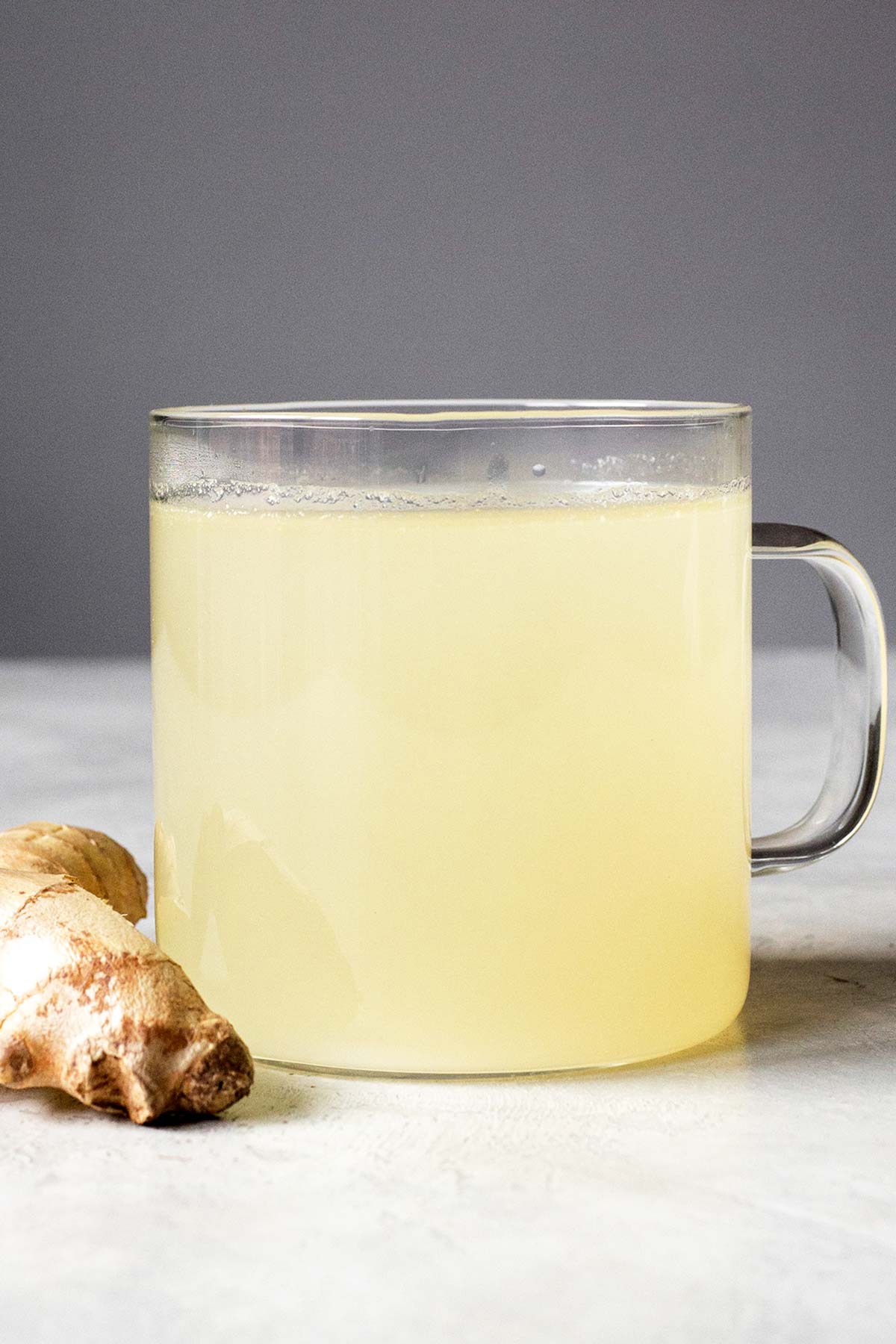
Fresh Ginger Tea
Ginger tea is a drink made by steeping fresh or dried ginger in water. It’s an herbal beverage and doesn’t contain any caffeine. Ginger used in tea is the root of a flowering plant and it can be eaten raw or cooked. It’s spicy so a little goes a long way.
Ginger tea made from scratch, using fresh ginger, may seem like a lot of work, but it’s actually quick and easy using a couple of shortcuts that involves a grater.
RELATED: Starbucks Medicine Ball Tea Copycat Recipe
5 Ginger Tea Health Benefits
1. Contains Antioxidants
Ginger is an excellent source of health-promoting antioxidant compounds. This mainly includes gingerols, parasols, and shogaols. Antioxidants protect your cells by minimizing free radicals and oxidative stress, a major cause of chronic disease.
2. Reduces Inflammation
The antioxidants in ginger also have anti-inflammatory effects on the body. They work by reducing certain proteins, called pro-inflammatory cytokines, which are involved in inflammation. This may help manage inflammatory diseases, like rheumatoid arthritis, osteoarthritis, or inflammatory bowel disease (IBD).
3. Minimizes Nausea
Ginger may ease nausea caused by surgery, medication, motion sickness, or pregnancy. Ginger also helps control other digestive issues like gas, bloating, stomach cramping, which often appear with nausea.
4. Manages High Blood Pressure
One of the biggest risk factors for heart disease is high blood pressure, or hypertension. Ginger can reduce the risk by increasing substances that widen blood vessels, ultimately improving blood flow and reducing pressure.
5. Protects Brain Function
The antioxidant and anti-inflammatory effects of gingerols and shogaols can protect your neurons, or nerve cells. This may reduce the risk of neurodegenerative conditions like Alzheimer’s disease, as well as other memory disorders.
Side Effects of Ginger Tea
Ginger and ginger tea might cause heartburn, diarrhea, and stomach discomfort, especially if you drink too much. The strong, spicy flavor may also irritate your mouth. If this happens when you drink ginger tea, consider diluting the drink with more water.
Ginger might increase the risk of bleeding, according to Mount Sinai Hospital. More research is needed, but if you’re taking blood-thinning medications, ask your doctor if it’s safe to drink ginger tea.
RELATED: Ginger Syrup
Ingredient Notes
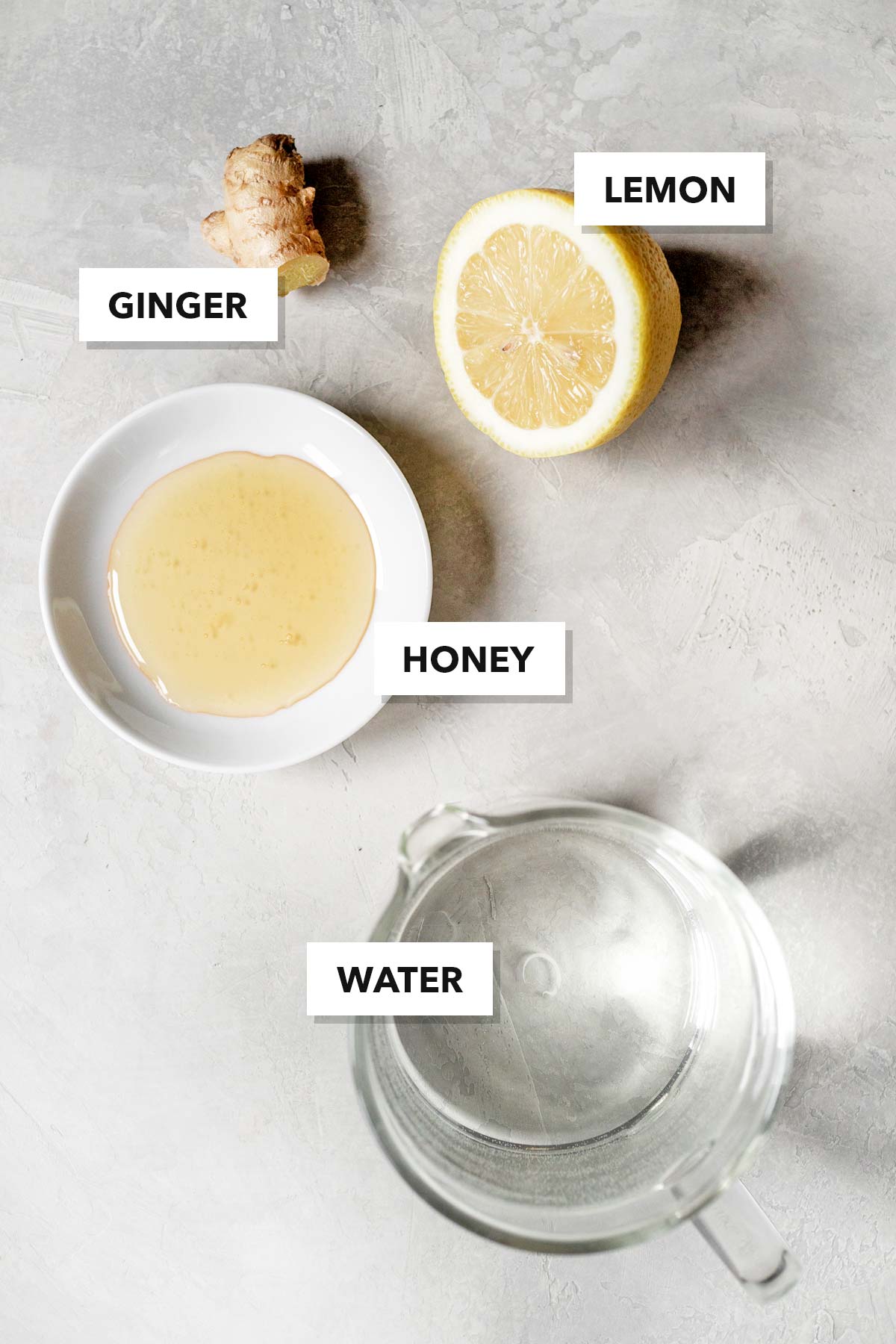
- Fresh ginger: Find ginger root in the produce section of your supermarket. Look for firm pieces that look plump.
- Lemon: Sliced lemons or lemon juice both work.
- Honey: Use any kind of honey you have available.
- Water: Tea is mostly made of water so use filtered water if possible.
For full ingredients and detailed instructions, please see the recipe card at the bottom of the post.
Step-by-Step Instructions
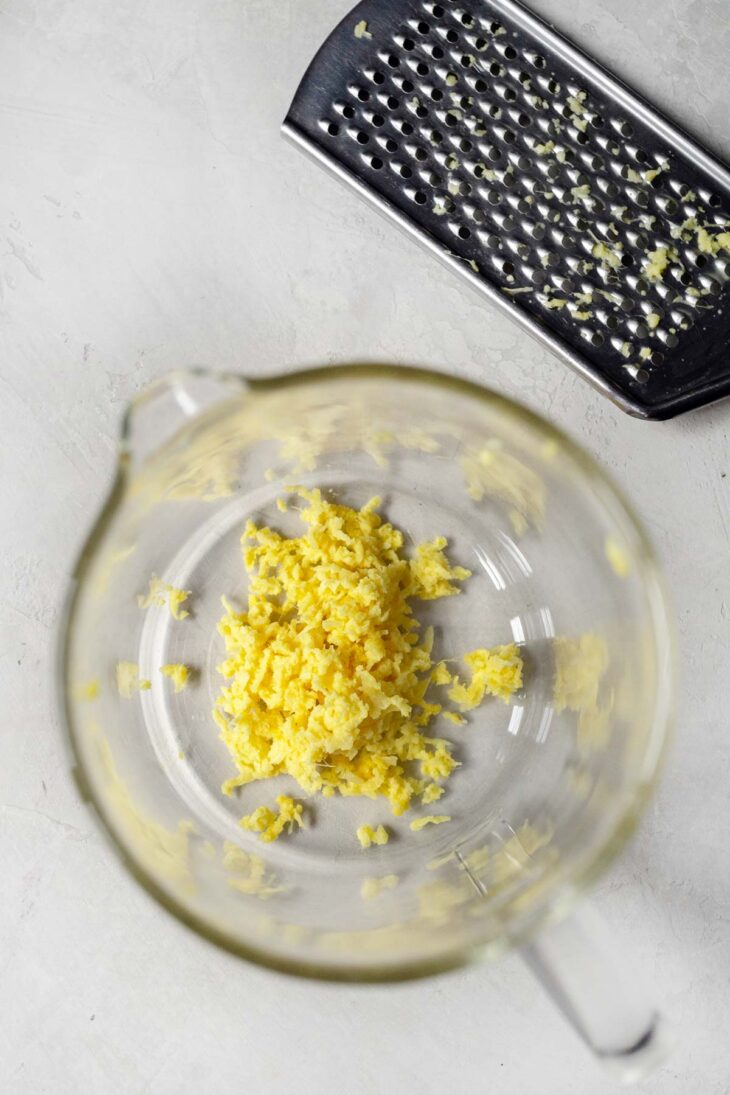
Step 1: Peel and grate ginger. Grate ginger straight into the teapot.
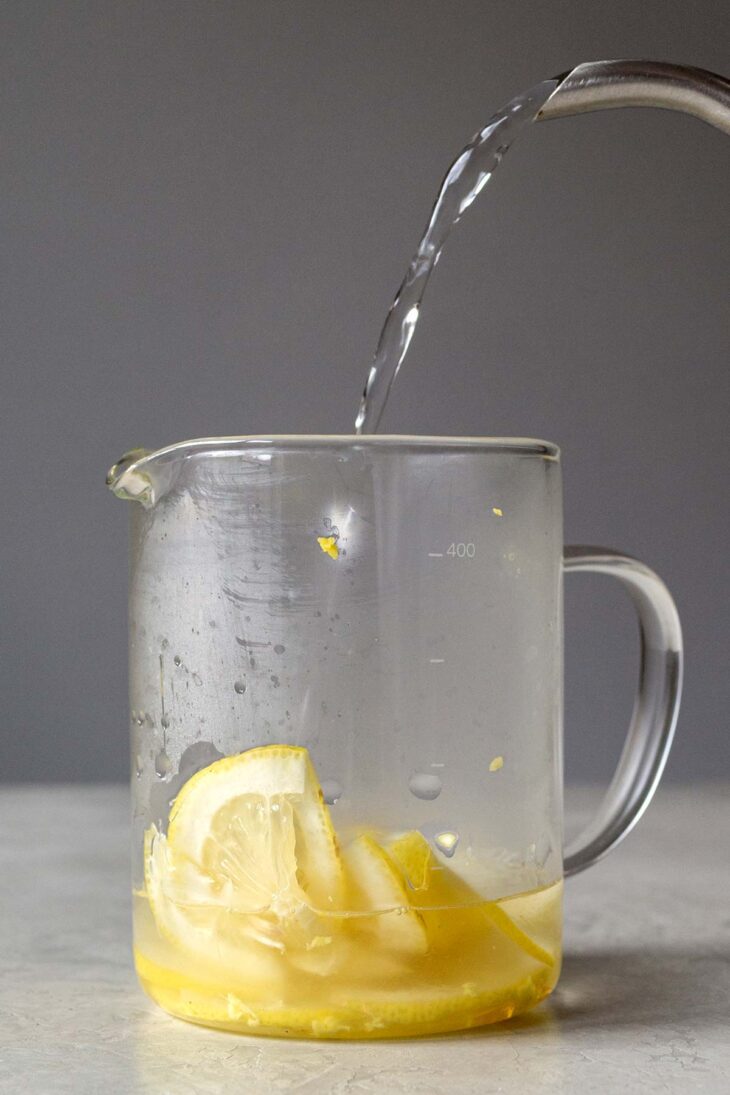
Step 2: Add lemon slices and hot water into the teapot.
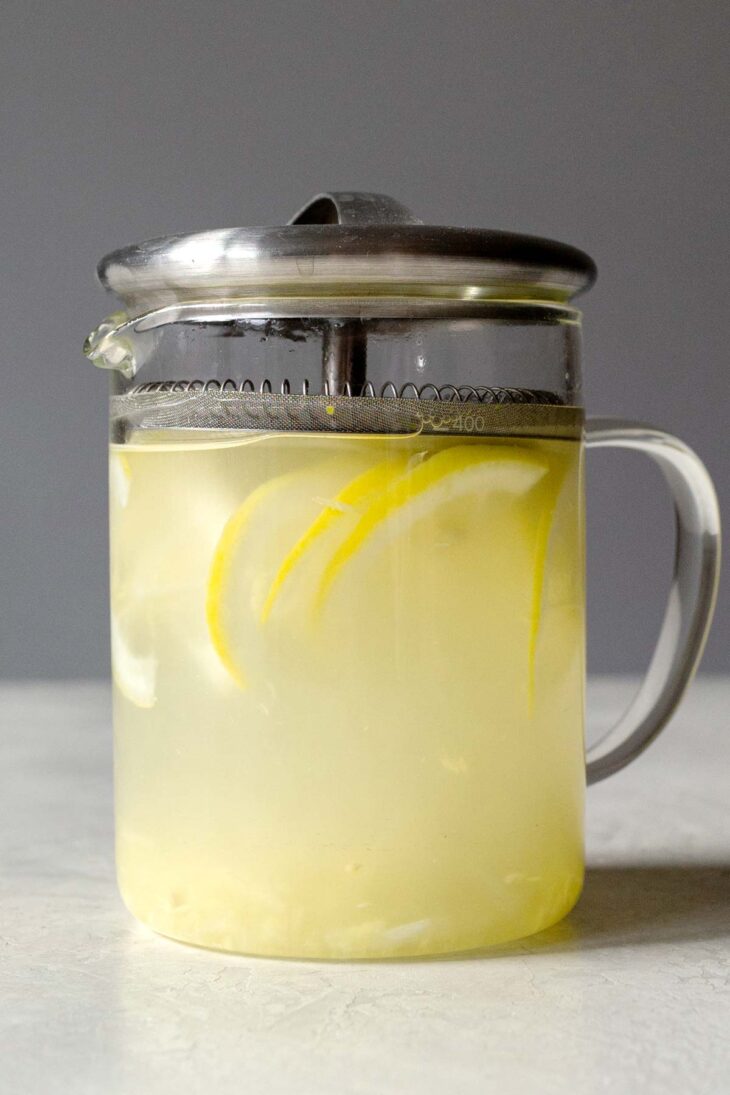
Step 3: Cover and steep.
Herbals teas can steep for longer than black tea or green tea. The longer you steep, the stronger the ginger and lemon flavor.
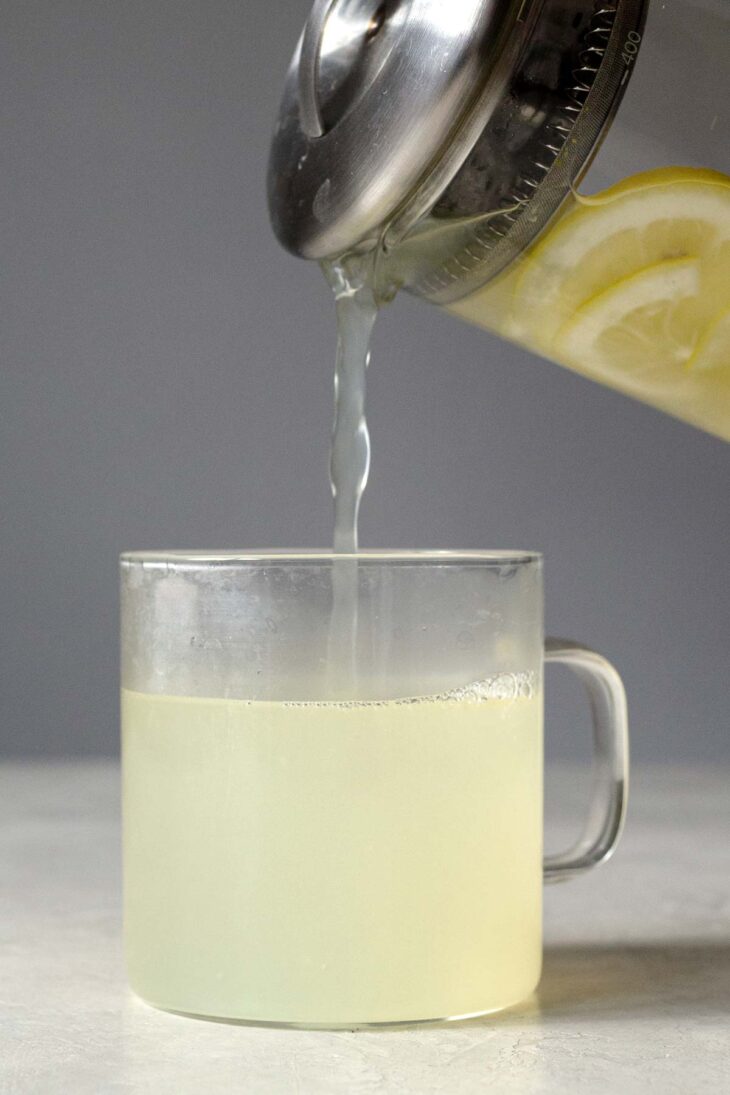
Step 4: Strain solids and pour hot tea into a teacup. Add honey to taste.
Recipe Notes
No need to buy the entire ginger root.
Avoid buying fresh ginger root that’s shriveled and dry. Look for one that’s plump and firm. Ginger is usually sold by weight, not by the piece, so don’t be afraid to break off a piece of the freshest ginger root in the pile if it’s too big.
Adjust ginger as needed.
Add as much or little ginger as you like since it can get too spicy. For a serving of 1 cup of water, I’m using an half inch of fresh ginger root. If you want a milder taste, use less ginger.
Keep grated ginger in the freezer.
You can grate ginger ahead of time and freeze it. Store it in a resealable plastic bag, flattening it before freezing.
RELATED: How to Freeze and Store Fresh Ginger
Expert Tips
- A teapot with a strainer lid or a French press is great for making ginger tea.
- Instead of sliced lemons, you can also use the juice from half a lemon.
- To peel fresh ginger easily, use a spoon to scrape off the peel.
- Make sure to scrub and wash the lemons before slicing them.
- For a refreshing summer drink, make it iced by cooling the drink down, then adding ice.
Questions You May Have
There’s no caffeine in ginger tea.
Yes! I strain out the ginger but you can definitely leave it in if you prefer.
There are claims that you destroy the good enzymes in honey if you add it to boiling hot water. If you’re worried about this, add the honey to your teacup after the tea has cooled down a little.
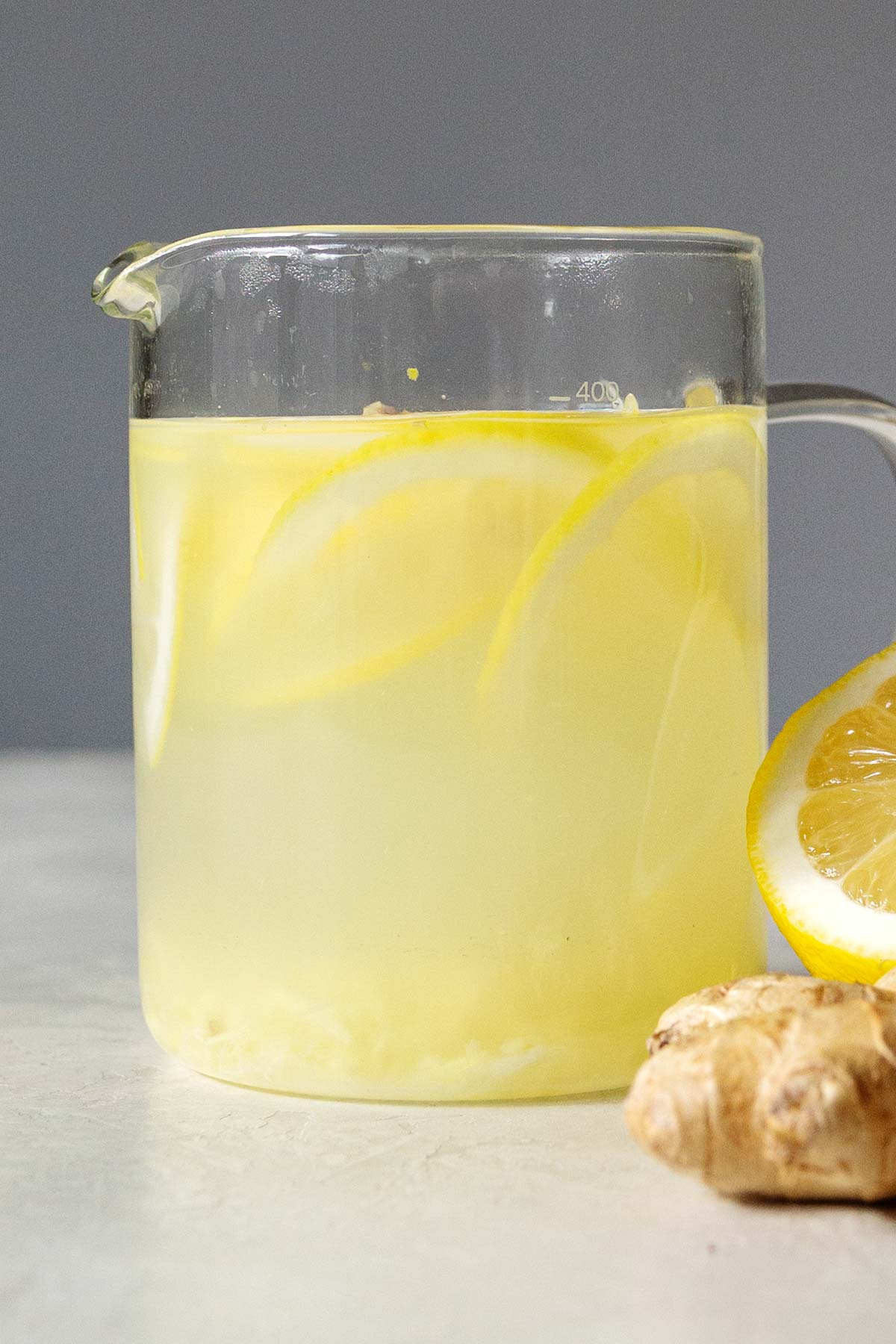
Related
- Ginger Shot
- 15 Benefits of Drinking Ginger Tea
- Golden Milk (Turmeric Latte)
- 15 Herbal Tea Recipes
- Citron Tea from Scratch
- Lemon Tea
- Ginger Syrup
- Pineapple Ginger Iced Tea
If you tried this Fresh Ginger Tea recipe, please leave a ⭐⭐⭐⭐⭐ star rating and let me know how you like it in the comments below.
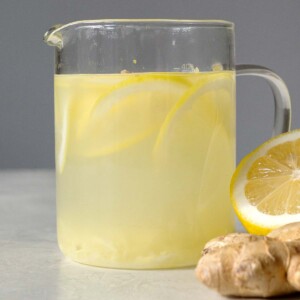
Fresh Ginger Tea
Equipment
Ingredients
- 2 cups water
- ½ lemon, thinly sliced
- 1 inch fresh ginger root
- 1 tablespoon honey
Instructions
- Peel and grate ginger.Peel one inch piece of fresh ginger root and grate into a teapot.
- Add lemon slices and hot water into the teapot. Cover and steep for 5 minutes.Use filtered water for the best quality ginger tea. Boiling hot water should be used. If using an electric kettle with a temperature setting, set it to 208°F.
- Strain solids and pour hot tea into a teacup. Add honey to taste.
Notes
- Avoid buying fresh ginger root that’s shriveled and dry. Look for one that’s plump and firm. Ginger is usually sold by weight don’t be afraid to break off a piece of the freshest ginger root in the pile if it’s too big.
- To peel fresh ginger easily, use a spoon to scrape off the peel.
- Add as much or little ginger as you like since it can get too spicy. For a serving of 1 cup of water, a half inch of ginger root in this recipe. If you want a milder taste, use less ginger.
- You can grate ginger ahead of time and freeze it. Store it in a resealable plastic bag, flattening it before freezing. When you need some grated ginger, snap off a piece.
- Instead of sliced lemons, you can also use the juice from half a lemon.
- Make sure to scrub and wash the lemons before slicing them.
- Herbals teas can steep for longer than black tea or green tea. The longer you steep, the stronger the ginger and lemon flavor.
Nutrition
Nutrition information is automatically calculated, so should only be used as an approximation.
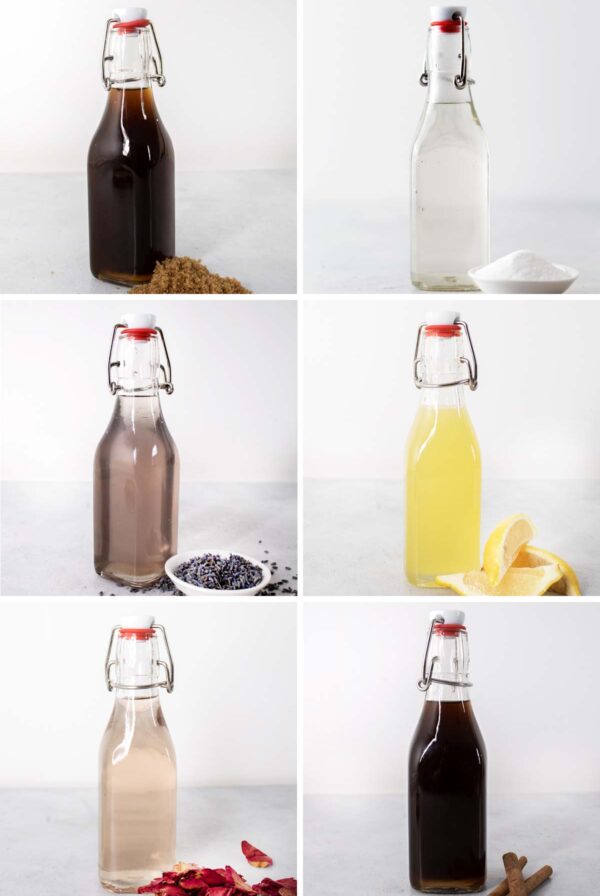
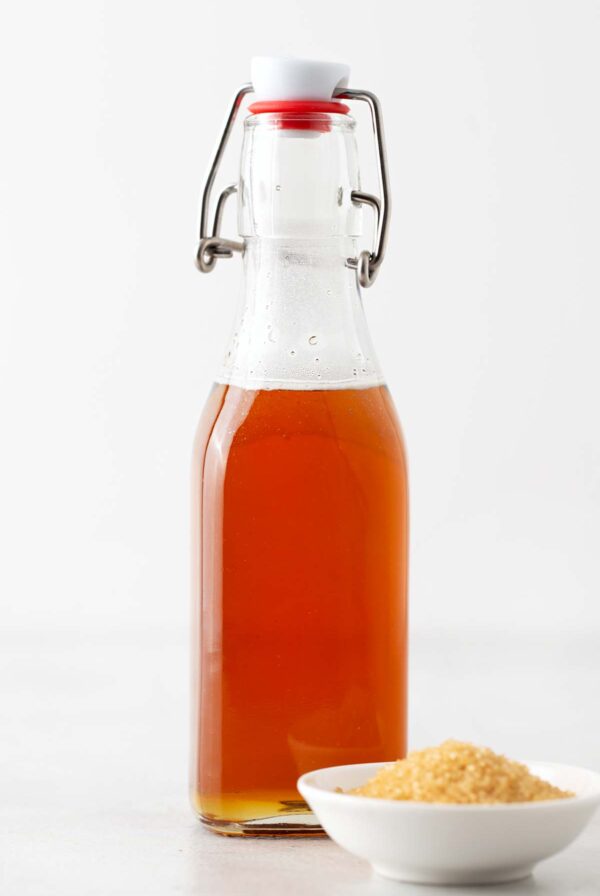
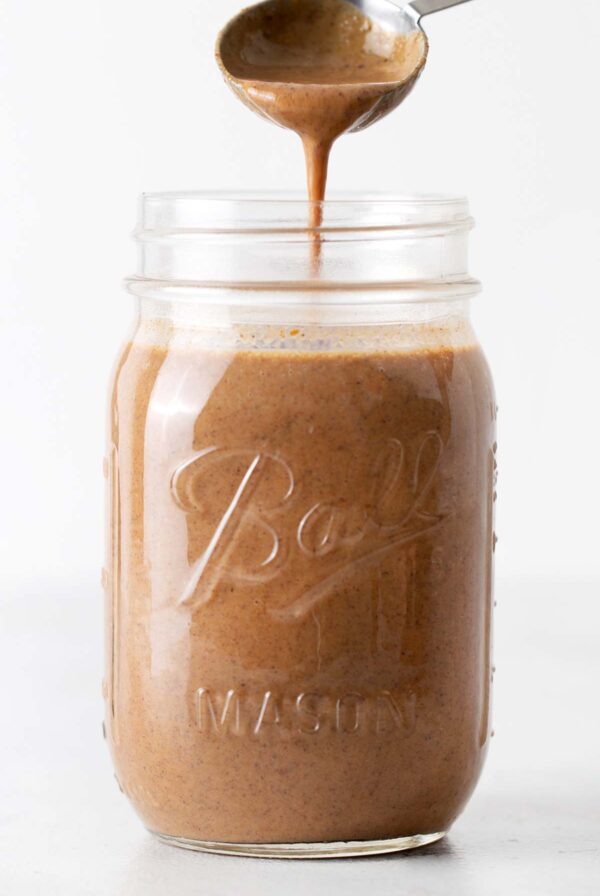
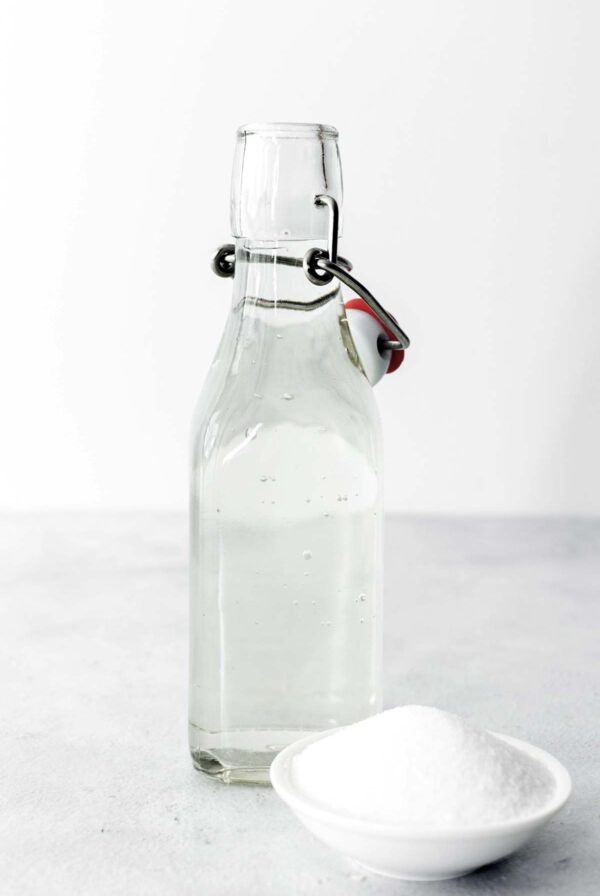








I didn’t actually follow the recipe. I used it strictly for guidance about relative quantities of water and ginger root. I went my own way beyond that, in part because I was using frozen ginger root and in part because I wanted a strong infusion for therapeutic purposes.
I figured others might be interested in my variation, which is why I’m posting it here.
I took out a 1″ section of ginger from a container I keep in my freezer, and peeled it with a carrot peeler. It’s easier to do this if you don’t let it thaw too much, but it wasn’t too hard to peel even after I let it thaw more than I’d intended.
I then sliced the section of peeled ginger root into the thinnest slices I could muster without being too fussy about it. Hint: ginger is much easier to slice with the grain rather than across it, meaning lengthwise rather than crosswise, because you’re not cutting across the fibers in this very fibrous root but parallel to them.
I dropped the ginger slices into a large mug, and
when the water for my morning tea was at 200° F., I added some of that slightly less than boiling water to the mug containing the ginger slices. I then covered the mug with a small plate and left the ginger infusion to do what it would until I was ready to drink it many hours later.
At that point, I poured the ginger infusion into a small saucepan and covered the pan with a lid, bringing the temperature back up to slightly below boiling. Meanwhile, I dropped what was perhaps a scant tablespoon of locally produced creamed lemon honey in the mug, and then poured the reheated ginger infusion back into the mug using a handheld strainer
to remove the slices of ginger.
In retrospect, I’m not sure that last step was really necessary because the slices of ginger were large enough and I guess so waterlogged that they weren’t floating in my tea. I might have just left them in there like one might do with herbal teas in teabags, in order to continue adding to the strength of the infusion —although, granted, I may already have extracted everything the ginger slices could provide.
This was not as complicated as it sounds; I put in more detail than was probably necessary for those of you who’ve never worked with frozen ginger. It’s a brilliant way of storing fresh ginger root if you bought too much of it or don’t feel like running to the store every time you want a hunk of ginger for something you’re cooking. You can expect a loss of texture and some discoloration as a result of freezing and thawing it, but given how finely we tend to chop or grate ginger for use in food recipes, neither of those changes makes much difference if any.
Hi!!
I generally heat my water to temp in an electric kettle. Then I put the things that I am going to steep into my infuser & that into large Yeti like cup (covered to steep) and drink right from there. (adding honey after i take out the infuser). Would it be fine to add the grated ginger to my loose leaf tea, in the infuser??
Thank you!
Hi Andrea, yup!
I love everything ginger. A word of caution though…while ginger doesn’t have any caffeine, it is a stimulant. I realized this after making a mocktail with it during Dry January. It kept me up all night! But I think this recipe is a great replacement for morning coffee or to cozy in on snowy days. Like today! 🙂
I noticed that actually there is no tea used in this recipe?
Hi Yeyen, yup, no real tea. It’s tea in the sense that it’s an herbal infusion.